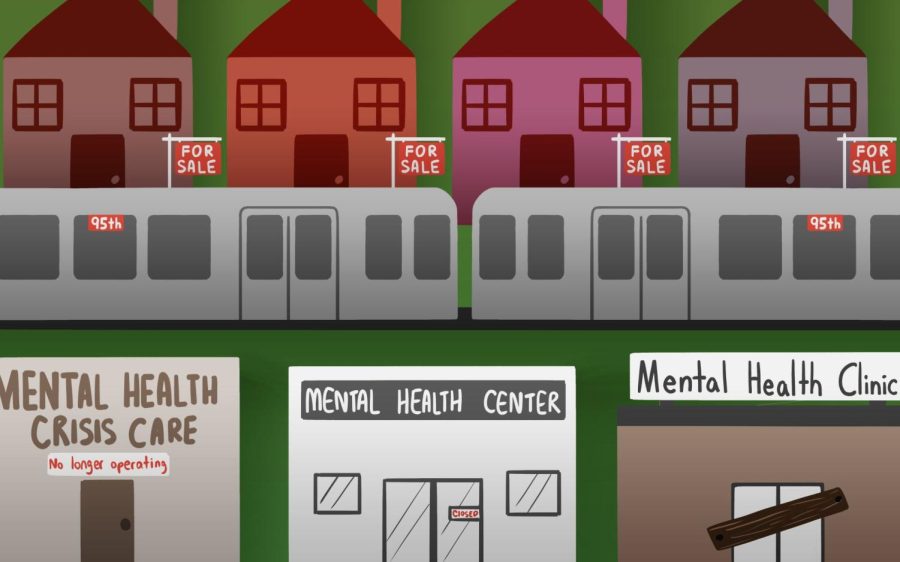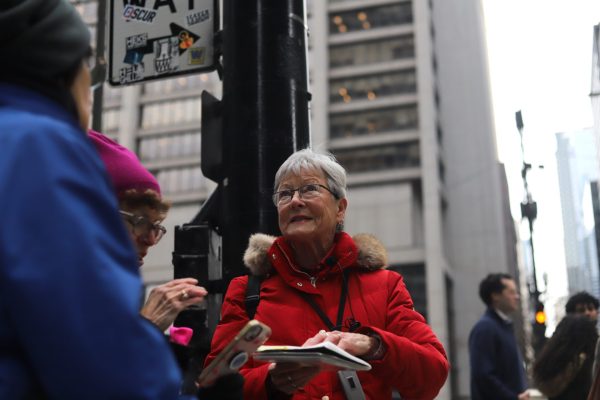OPINION: Not a public safety issue: CTA lies at crossroads of housing, mental health crisis
One of the first pieces of advice I was told about living in Chicago was how to survive the CTA. Other students would offer their insight about which stations were safe, when to ride and which areas to avoid.
Most of this stemmed from concerns about public safety within train cars and stations. Horror stories about being stabbed, stalked and assaulted used to frighten me. It made me weary of riding the Red Line at night and being at the Jackson stop, the Red Line stop to get to the Loop campus.
Two years later, I found that those concerns stemmed from a different concern altogether. I noticed how the presence of people experiencing homelessness and issues due to mental health sparked discourse about public safety on the CTA. Reflecting back on the advice I received, I remembered hearing that if someone was talking to themselves or taking up three seats to sleep were supposed to be warning signs for potential danger.
Katie Prout, a staff writer at The Chicago Reader, saw the same sentiments in news media associating violent crime with unhoused people.
“Doing a story that’s about CTA public safety, and then in the second paragraph after citing, violence statistics, talking about the presence of unhoused people has also increased,” she said. “Without saying [it] directly, it’s saying it.”
I subconsciously linked the two together. I believed that my safety and security were threatened if someone else showed signs of mental instability or homelessness within the same space. As much as the CTA claims they put the safety of passengers at the forefront, were they really to blame if those experiencing homelessness chose to seek shelter on the train?
No, the discussion about public safety on the CTA really should not be about safety at all. Our attention should be focused on the city’s lack of affordable and accessible housing resources that lead people with little to no options at the end of the day.
If Chicago has about 3,000 shelter beds available, but caters a population of almost 4,000 people who are unhoused, some are left with nothing.
Our focus becomes shifted toward the individuals who have the least resources. On the platform at Fullerton, I witness my peers point and laugh at people talking to themselves like a spectacle.
“I think it’s easier for people to blame another, usually without power or less power than themselves, like a scapegoat,” Prout said.
I read Prout’s piece ‘‘Why you talking to a bum?” about speaking with people living on the CTA who detailed their experiences of being harassed and trying to seek shelter. She saw how the city’s failure to provide equitable resources left people with little to no options.
Chicago currently has five public mental health facilities open. How are people supposed to find support in their area?
On a WBEZ Reset segment, Don Washington – executive director of the Chicago Housing Initiative – described the increased presence of unhoused people on the CTA as a policy concern.
“This is a public policy problem,” Washington said on Reset. “And we’ve been trying to depend on charity and private public partnerships and that’s not going to cut it.”
K’Von Jackson, a Chicago native and student at Columbia College Chicago, understands how the CTA becomes a last resort for unhoused people.
“If it’s, you know, 20 below out, and you don’t have a tent, or sleeping bags to stay warm. What are you gonna do?” Jackson said. “You’re gonna sleep in a subway station or you’re gonna sit in a train car all night, right? Because it’s warm. It’s a guaranteed shelter.”
However, crime does occur on the CTA. In a city of almost 2.7 million people, public spaces can become a site of violence. It is important to address that on train cars people smoke, fight and yell.
But that does not make crime committed by unhoused people a pattern.
“There are cases in which someone who is unhoused commits a violent crime against someone else that absolutely happens,” Prout said. “But one individual doesn’t speak for everyone and it doesn’t indicate a trend.”
In extreme circumstances, mental health crises can lead to violence. On the Brown Line, I witnessed someone start throwing glass bottles across the car.
“I can recall stuff happening on the Red and Blue Line, people fighting, people like just up to no good,” Jackson said. “Just do your best to kind of move away from the situation. If it gets to a point where people are verbally or visually uncomfortable, then contact the CTA employee.”
Even in these circumstances, recommending more policing of the CTA would not solve the underlying issue that people lack access to public mental health clinics or access to affordable healthcare.
“Cops are not going to build more homes,” Prout said. “The issue of people staying on the CTA is by and large that we don’t have other places in the city for people to go and we need a variety of housing options.”
Our language surrounding crime, unhoused people and those with mental health issues becomes dehumanizing. If we reduce someone to their housing status or the visibility of their mental illness, we take away their humanity and dignity.
“It creates a really bad culture of how we treat people,” Jackson said. “Because at the end of the day, whether you have a roof over your head or not, you’re still a person. You should be treated as such.”
As we enter a new progressive mayoral administration, there is the promise of root causes finally becoming addressed. We should take this opportunity to reflect as Chicagoans how we examine our privileges and how we judge someone during the hardest moments in their lives.












